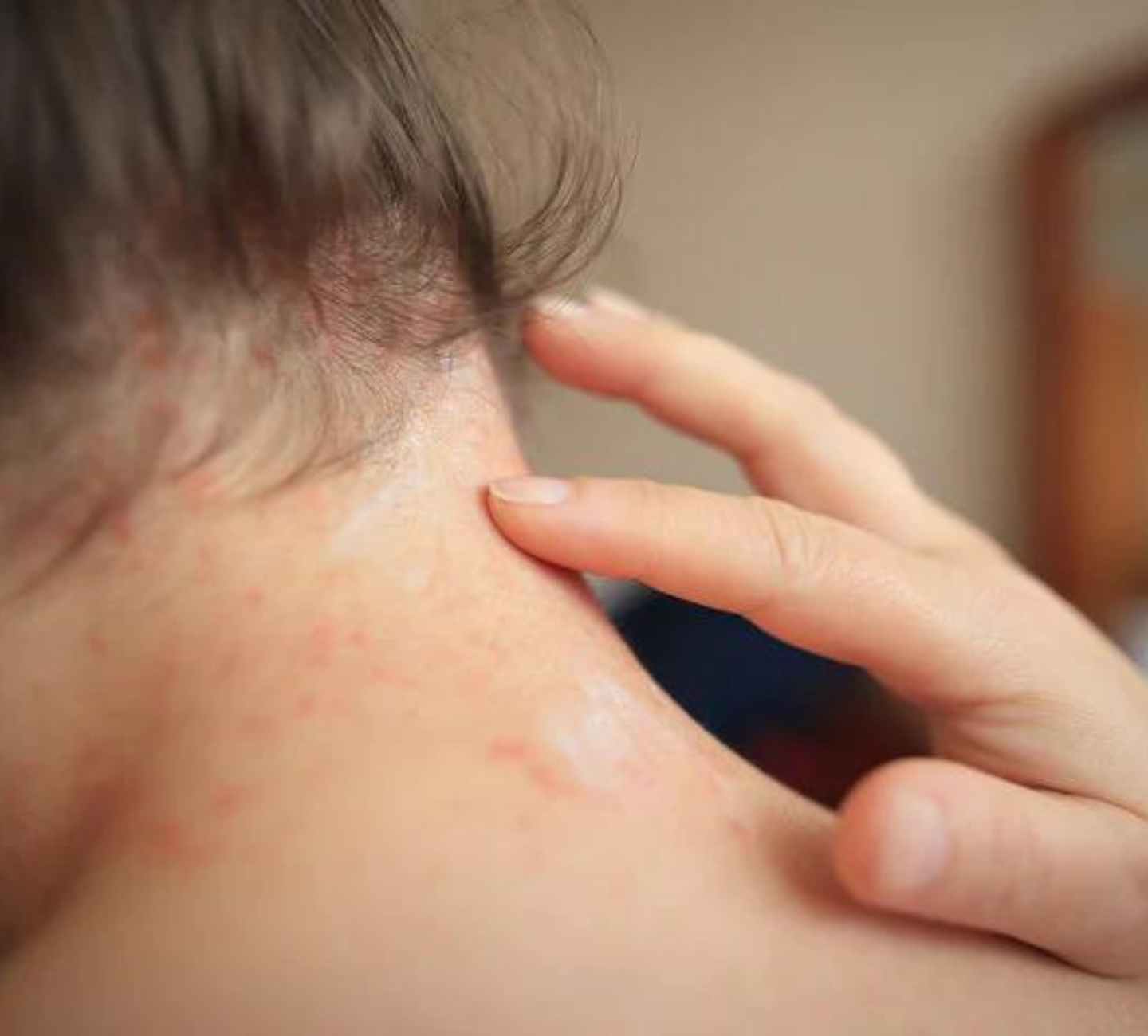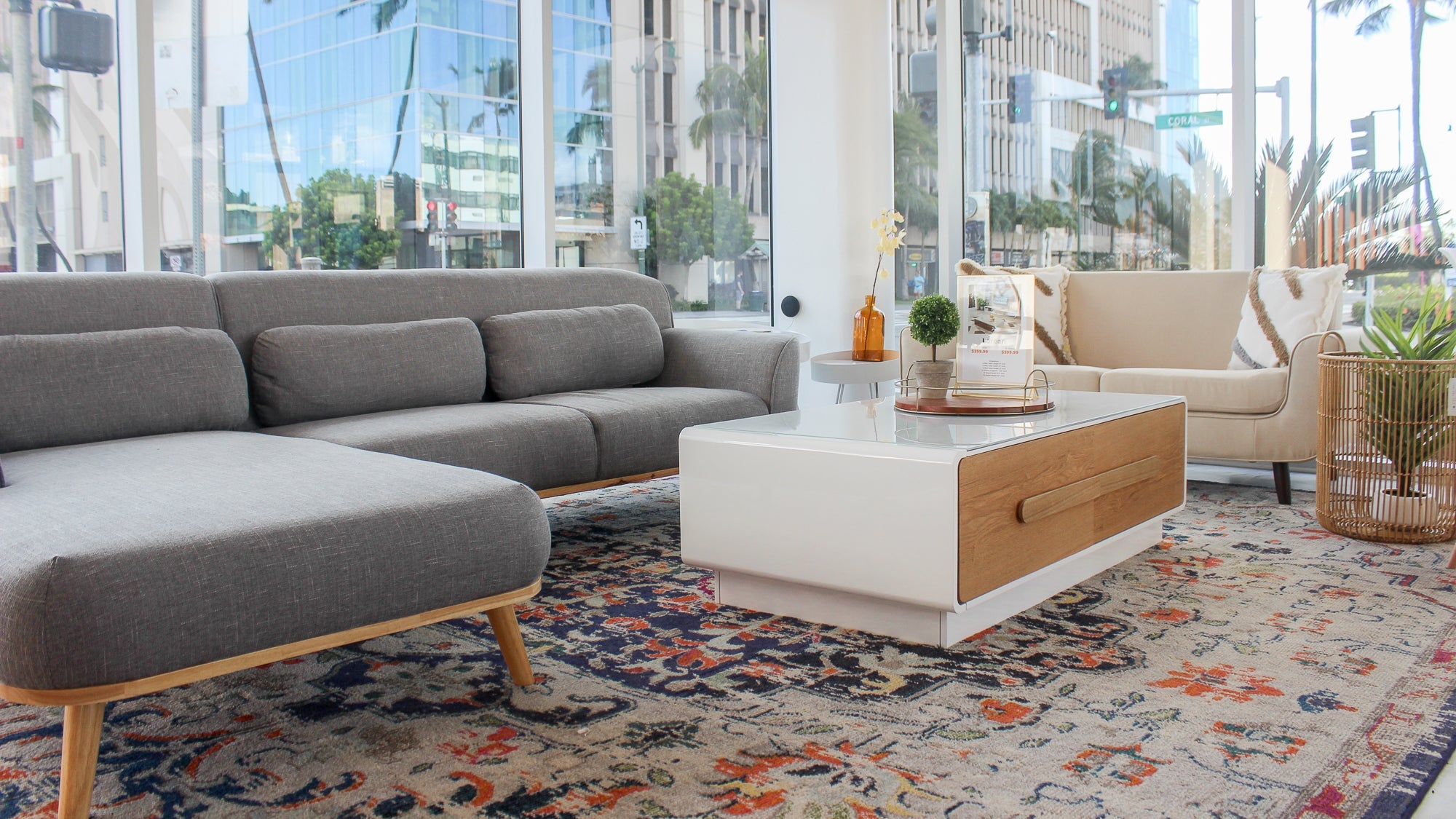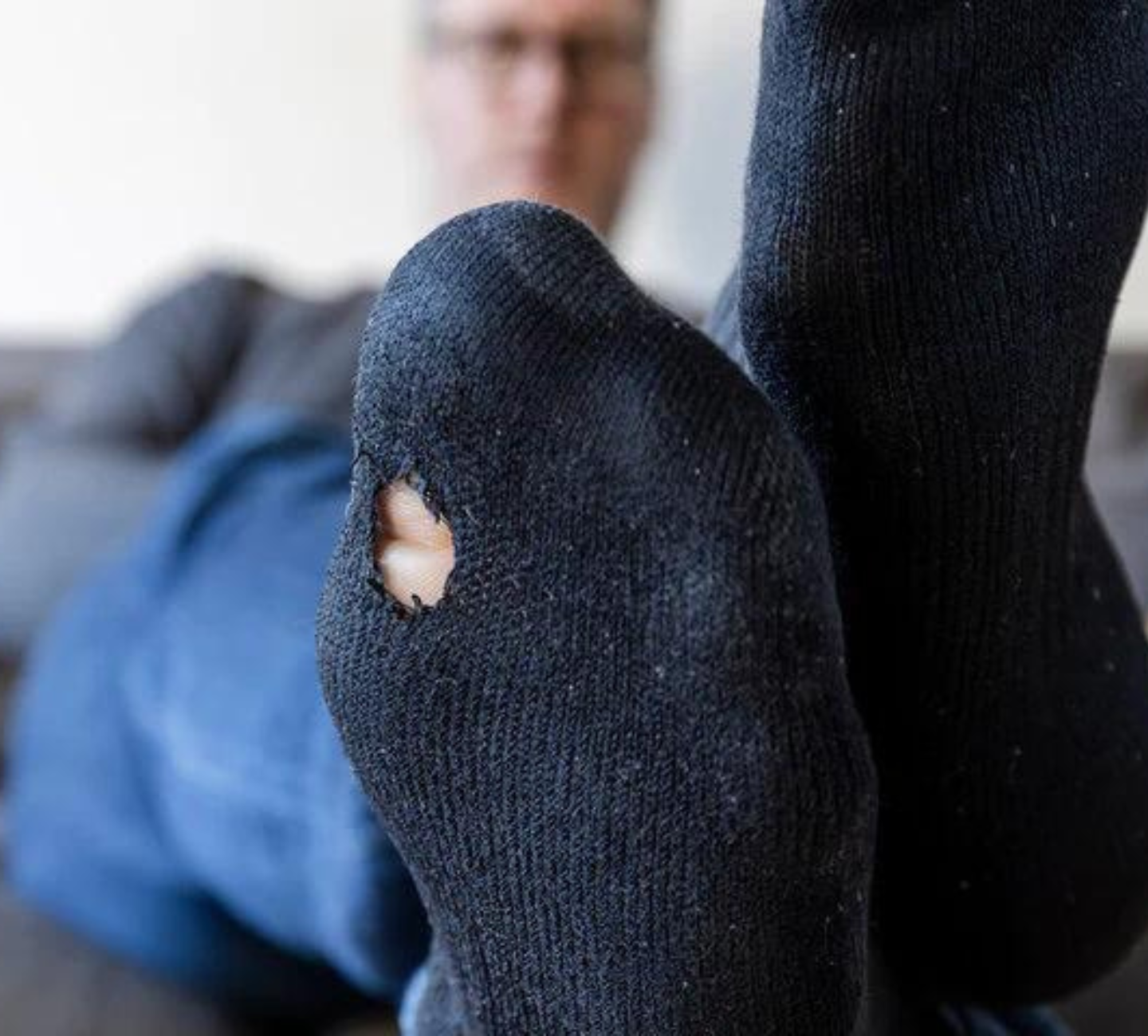Is your couch more than just a comfy place to relax? Surprisingly, it might be the cause of unexpected skin irritations and breakouts. From rashes to acne, your sofa might cause more harm than good. Fortunately, there’s an easy solution for furniture related skin health woes.
Traffic, an empty milk carton in the fridge, dropping your keys when you’re at the door with forty-seven bags on one arm because second trips to the car are for the weak - these are all things that cause irritation in our day to day lives. But your couch? Could that be causing irritation, as well? Surprisingly, yes.
Bacteria, sweat, allergens, and more can get trapped in the fabric of your sofa and impact your skin health. The results can be anywhere from a mild skin irritation to an infection to acne.
So, what’s the best way to keep your sofa clean? The best way to ditch germs and other nasty skin irritants found on a dirty sofa is to wash it regularly. In most cases, cleaning a couch involves using a fabric shampooer, spray bottles and a scrub brush, or some even suggest submerging entire couch cushions in your bathtub one at a time.
Luckily, there are couches that come apart and machine washable sofas on the market, including the Feathers by Mario Capasa. Running your couch through the wash may sound like a thought experiment in physics class, but it’s actually easier than you’d think. Simply remove the replaceable fabric sections, toss them in the wash, air dry, and replace. Clean, sanitized, and less irritating than that friend that keeps asking questions during the movie. We’re looking at you, Andre. -_-

Upholstered furniture, especially sofas, will collect a multitude of microorganisms. We don’t have to tell you how they get there. You know. We all know.
Over time, through daily use, we shed skin cells, body oils, sweat, and other organic materials that can foster the growth of these bacteria and germs. Given their cozy and often warm nature, couches can easily become breeding grounds for microorganisms.
One of the primary bacteria found on upholstery is Staphylococcus aureus, which you may know from its starring role in staph infections. This bacterium is commonly found on the skin and in the nasal passages of healthy individuals. However, when it multiplies uncontrollably, it can lead to various skin infections including boils, impetigo, and even cellulitis. Prolonged contact with an infected sofa can be a contributing factor to these infections. Ew.
Propionibacterium acnes is the bacterium most often associated with acne and is the bane of teenagers across the globe on class picture day. This sneaky organism often finds its way onto sofas, particularly if individuals with active breakouts use the furniture. This can then create a vicious cycle: the sofa becomes a reservoir for the bacteria, which in turn can exacerbate skin problems in individuals using the sofa. Yikes!
Another concern is streptococcal bacteria, the mastermind behind strep throat, scarlet fever, and cellulitis. While many strains of streptococcal bacteria are harmless, some can cause skin infections like impetigo, especially in children. An infected sofa can be a vector for the spread of this bacteria, particularly in households with multiple children. Yuck.
When we think of sweat, we typically think of exercise, hot summer days, or doing hard work. What we might not think about is perspiration that happens when we’re resting in our homes. This can happen in warmer environments, while sitting on less breathable upholstery, or just because. It’s a natural function, after all.
Human sweat primarily consists of water, but it also contains salts, proteins, urea, and other compounds. When we sweat on our sofas, this moisture doesn't just evaporate and disappear. Instead, it seeps into the fabric, providing the prime environment for bacteria and other microorganisms.
Warmth intensifies the bacteria-friendly environment that sweat creates on furniture. This warmth can stem from our body heat, cushioned fabrics, or a room's ambient temperature. These conditions foster bacteria like Staphylococcus aureus, which can transfer to our skin, causing infections. This is especially dangerous for anyone that has a break in their skin like a scratch, hangnail, or an open wound. Maintaining clean, dry lounging spaces is crucial for both comfort and health.
A sofa teeming with germs might not be your first guess as to the cause of acne, but it’s a very likely culprit. As one of the most used furniture pieces, couches often retain sweat, dead skin cells, and other residues. These can harbor bacteria, turning the sofa into a hotspot for germs that can cause or exacerbate acne. Prolonged contact, such as during binge-watching or naps, exposes the skin to these bacteria, leading to face and body acne.
Dermatologists and skin care experts recommend washing the fabrics that your skin touches frequently to reduce acne breakouts. The Best Slipcover Sofa rated by Healthline makes it easy to remove, wash, or replace all the fabric on your sofa. And, bonus, it helps keep your house smelling nice.
The Feathers designer sofa is a gorgeous addition to any room but it’s also functional and it’s a clean freak’s dream. The spill-proof design helps to prevent stains, sweat, and other bacteria laden fluids from seeping into the fabric. Being 100% machine washable means that your couch can get a deep clean as often as every laundry day. We know. Laundry day gets away from you sometimes. It happens to us all.
Beyond comfort and aesthetics, this cloud couch dupe prioritizes health. By allowing owners to quickly and easily wash and sanitize the entire exterior of the couch, Feathers offers a win-win for cleanliness and skin care. Regular washing of the sofa covers not only deals with surface dirt but more importantly, annihilates hidden germs, safeguarding our skin's health.
Traffic, an empty milk carton in the fridge, dropping your keys when you’re at the door with forty-seven bags on one arm because second trips to the car are for the weak - these are all things that cause irritation in our day to day lives. But your couch? Could that be causing irritation, as well? Surprisingly, yes.
Bacteria, sweat, allergens, and more can get trapped in the fabric of your sofa and impact your skin health. The results can be anywhere from a mild skin irritation to an infection to acne.
So, what’s the best way to keep your sofa clean? The best way to ditch germs and other nasty skin irritants found on a dirty sofa is to wash it regularly. In most cases, cleaning a couch involves using a fabric shampooer, spray bottles and a scrub brush, or some even suggest submerging entire couch cushions in your bathtub one at a time.
Luckily, there are couches that come apart and machine washable sofas on the market, including the Feathers by Mario Capasa. Running your couch through the wash may sound like a thought experiment in physics class, but it’s actually easier than you’d think. Simply remove the replaceable fabric sections, toss them in the wash, air dry, and replace. Clean, sanitized, and less irritating than that friend that keeps asking questions during the movie. We’re looking at you, Andre. -_-
Specific Germs or Bacteria Commonly Found on Upholstery and Their Ties to Skin Issues

Upholstered furniture, especially sofas, will collect a multitude of microorganisms. We don’t have to tell you how they get there. You know. We all know.
Over time, through daily use, we shed skin cells, body oils, sweat, and other organic materials that can foster the growth of these bacteria and germs. Given their cozy and often warm nature, couches can easily become breeding grounds for microorganisms.
One of the primary bacteria found on upholstery is Staphylococcus aureus, which you may know from its starring role in staph infections. This bacterium is commonly found on the skin and in the nasal passages of healthy individuals. However, when it multiplies uncontrollably, it can lead to various skin infections including boils, impetigo, and even cellulitis. Prolonged contact with an infected sofa can be a contributing factor to these infections. Ew.
Propionibacterium acnes is the bacterium most often associated with acne and is the bane of teenagers across the globe on class picture day. This sneaky organism often finds its way onto sofas, particularly if individuals with active breakouts use the furniture. This can then create a vicious cycle: the sofa becomes a reservoir for the bacteria, which in turn can exacerbate skin problems in individuals using the sofa. Yikes!
Another concern is streptococcal bacteria, the mastermind behind strep throat, scarlet fever, and cellulitis. While many strains of streptococcal bacteria are harmless, some can cause skin infections like impetigo, especially in children. An infected sofa can be a vector for the spread of this bacteria, particularly in households with multiple children. Yuck.
The Sweat Factor

When we think of sweat, we typically think of exercise, hot summer days, or doing hard work. What we might not think about is perspiration that happens when we’re resting in our homes. This can happen in warmer environments, while sitting on less breathable upholstery, or just because. It’s a natural function, after all.
Human sweat primarily consists of water, but it also contains salts, proteins, urea, and other compounds. When we sweat on our sofas, this moisture doesn't just evaporate and disappear. Instead, it seeps into the fabric, providing the prime environment for bacteria and other microorganisms.
Warmth intensifies the bacteria-friendly environment that sweat creates on furniture. This warmth can stem from our body heat, cushioned fabrics, or a room's ambient temperature. These conditions foster bacteria like Staphylococcus aureus, which can transfer to our skin, causing infections. This is especially dangerous for anyone that has a break in their skin like a scratch, hangnail, or an open wound. Maintaining clean, dry lounging spaces is crucial for both comfort and health.
A Closer Look at Acne and Infections

A sofa teeming with germs might not be your first guess as to the cause of acne, but it’s a very likely culprit. As one of the most used furniture pieces, couches often retain sweat, dead skin cells, and other residues. These can harbor bacteria, turning the sofa into a hotspot for germs that can cause or exacerbate acne. Prolonged contact, such as during binge-watching or naps, exposes the skin to these bacteria, leading to face and body acne.
Dermatologists and skin care experts recommend washing the fabrics that your skin touches frequently to reduce acne breakouts. The Best Slipcover Sofa rated by Healthline makes it easy to remove, wash, or replace all the fabric on your sofa. And, bonus, it helps keep your house smelling nice.
The Feathers Machine Washable Sofa: A Dermatologist's Dream

The Feathers designer sofa is a gorgeous addition to any room but it’s also functional and it’s a clean freak’s dream. The spill-proof design helps to prevent stains, sweat, and other bacteria laden fluids from seeping into the fabric. Being 100% machine washable means that your couch can get a deep clean as often as every laundry day. We know. Laundry day gets away from you sometimes. It happens to us all.
Beyond comfort and aesthetics, this cloud couch dupe prioritizes health. By allowing owners to quickly and easily wash and sanitize the entire exterior of the couch, Feathers offers a win-win for cleanliness and skin care. Regular washing of the sofa covers not only deals with surface dirt but more importantly, annihilates hidden germs, safeguarding our skin's health.





Leave a comment
All comments are moderated before being published.
This site is protected by hCaptcha and the hCaptcha Privacy Policy and Terms of Service apply.